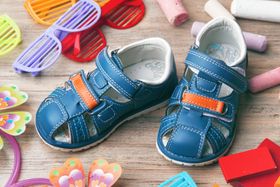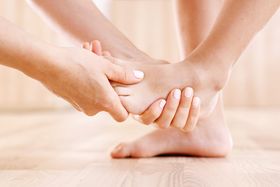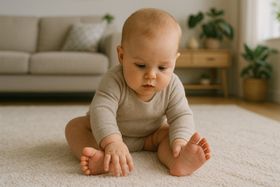Can Toe Walking Be a Sign of ADHD in Children?
Is your child walking on their toes? Learn about the link between ADHD and toe-walking, the significance of early detection, and how the right footwear can help.
Published July 26, 2023
When observing children at play, you might notice diverse behaviours and walking styles. Some of these can potentially point to underlying behavioural conditions such as Attention-Deficit/Hyperactivity Disorder (ADHD).
Here, Kerry Seaman—a passionate podiatrist specialising in biomechanics, podopaediatrics, and foot therapy—joins us to demystify toe walking in children and explain how it might be tied to autism and ADHD.
Unusual Walking Styles and ADHD
While toe walking is often associated with ADHD, this connection might not be as straightforward as it seems. Some children with ADHD might resort to toe-walking due to an abundance of energy that needs channeling or as a coping strategy based on their pace of life. For example, children might always want to lead when walking in a group or may feel as if they're perpetually lagging.
Interestingly, the environment plays a critical role in this behaviour. Children might prefer walking barefoot on a soil path rather than the street, pointing to potential sensory issues common in ADHD. Such children tend to be hypersensitive to their surroundings, including light and sound. Therefore, creating a calm and less clinical environment can significantly impact their walking style.
Physical Factors Contributing to Toe-Walking
While many reasons for toe-walking are behavioural, some children exhibit this tendency due to physical conditions. Issues with their bone structure, such as a pitched tail or calcaneal area or having a short calf muscle, can lead to toe-walking.
Some of these conditions may result from overuse of strollers or being in a hoist, causing unusual bone development. Other times, high prenatal development can cause obstructions, leading to tightened calf muscles. Regardless of the cause, physiotherapy focusing on calf and hamstring stretches can often be beneficial.
Understanding the Significance of Early Detection
Identifying unusual walking patterns early, particularly between the ages of four to six, is critical. This period is crucial for skeletal development, and any unusual walking style can indicate underlying conditions that need addressing.
Ensuring a balanced lifestyle with sufficient physical activity, restful sleep, a wholesome diet, and proper movement can contribute to a robust musculoskeletal system. Early detection and parental education can help prevent the issue from escalating and lead to more successful management down the line.
Role of Footwear in Addressing Toe-Walking
Footwear can significantly influence a child's walking style, and sports shoes and trainers, with their solid structure, are often beneficial for children who toe-walk. In certain cases, Timberland boots, known for their deep heel cup and higher ankle, are recommended.
For extreme cases, full-length orthotics designed to prevent toe flexing are used. These are constructed using different types of plastics and are produced in our labs located in Australia, Malaysia, and Ireland. When combined with a dedicated stretching programme, these orthotic devices can effectively curb toe-walking.
Monitoring and Long-Term Management
The use of orthotic devices may only be necessary for three to six months, addressing the issue in many cases. However, if toe-walking persists, annual or bi-annual reviews might be necessary to monitor any changes and adjust the management plan.
» Check out our selection of best kids' shoes for tippy-toe walkers
Guiding Our Children Towards Balanced Steps
While toe-walking is commonly observed in children within the autism spectrum, its association with ADHD is a complex issue. Numerous factors, from behavioural to physical, play a role in this unusual walking style. However, early detection, appropriate footwear, and creating comfortable environments can help manage this issue effectively.
Parents should stay vigilant when it comes to their child's walking style and not hesitate to consult a professional if they notice unusual patterns. Together, we can ensure that every child can walk their path comfortably and confidently.
Related Articles

10 Best Sandals for Boys to Feel and Look Cool
Benjamin Aduwo
July 20, 2023

Orthopaedic Shoes for Toddlers
First Walkers
June 10, 2025

How to Choose the Right Winter Boots for Toddlers: Size, Fit, etc.
Jasrah Javed
February 23, 2025

Baby Foot Development Milestones: What to Expect at Each Stage
Malika Yuldasheva
July 3, 2025

Is My Toddler's Walk Normal? Waddling Gait vs. Trendelenburg Gait
Leah Alexander
August 11, 2025
